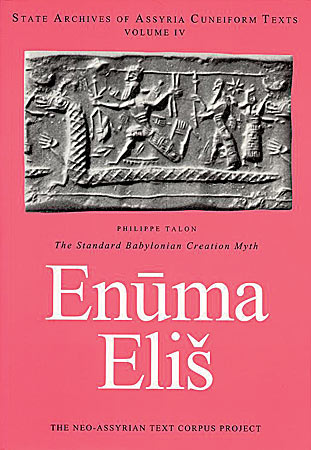Product desciption
The Standard Babylonian Creation Myth Enuma Elish Philippe Talon by Philippe Talon 9789521013287, 9521013281 instant download after payment.
STATE ARCHIVES OF ASSYRIA - CUNEIFORM TEXTS: The Standard Babylonian Creation Myth Enūma Eliš: Introduction, Cuneiform Text, Transliteration, and Sign List, With a Translation and Glossary in French ... Texts, 4) (English and French Edition). From the Introduction:
"The Babylonian Myth of Creation has been known to assyriologists for more
than a century through the works of G. Smith, L. W. King and St. Langdon.1
With the discovery of more material, R. Labat gave a comprehensive edition
and a commentary in 1935.2 W. G. Lambert started to collect the unpublished
material in the British Museum and elsewhere and was able to give a preliminary
cuneiform edition in 1966. 3 This remarkable work has given every
assyriologist the opportunity to read that important text in class and it remains
unchallenged till this day. Since its publication, however, many new texts
have come to light, the most important coming from Sultantepe and the Sippar
Library.
Almost forty years after its publication, Lambert's cuneiform text is still
the unavoidable base for every reconstruction of Enūma Eliš. W. G. Lambert
himself has continued to gather the unpublished material and we can expect
a definitive new treatment of this work in the near future. Nevertheless, many
translations have been offered recently in various languages and it is always
the burden of their authors to recompile all fragments and try to present an
up-to-date version of the myth.
With the advent of the State Archives of Assyria Cuneiform Texts, it seemed
to me a good opportunity to publish a new version of Enūma Eliš that would
take into account all the available material and offer an update of Lambert’s
1966 cuneiform text, along with a glossary and sign list, as is usual in the
series.
My interest in Enūma Eliš started a long time ago and, as probably all of
us have, I read it several times with my students. I also tried to make it known
to my colleagues in other fields during a seminar on the reading of myths in
Antiquity at the Université Libre de Bruxelles, particularly because of the
transmission of its tradition to later Neoplatonic philosophers.4
------
1 G. Smith, A Chaldaean Account of Genesis, London, 1878; L. W. King, The Seven Tablets of Creation,
London, 1902; St. Langdon, The Babylonian Epic of Creation, Oxford, 1923.
2 R. Labat, Le poème babylonien de la création, Paris, 1935.
3 W. G. Lambert and S. B. Parker, Enuma EUS. The Babylonian Epic of Creation. The Cuneiform Text,
Oxford, 1966.
4 One of the most striking features of this transmission is the fact that the Neoplatonic author Damascius
(born ca. AD 460) was still able to present a very precise description of the beginning of Enūma Eliš several
centuries after the disappearance of cuneiform writing."
Lorsqu’en haut, les cieux n’étaient pas nommés,
qu’en bas la terre ne portait pas de nom,
c’est Apsû qui était le premier, leur ancêtre,
la créatrice était Tiamat, leur mère à tous...


